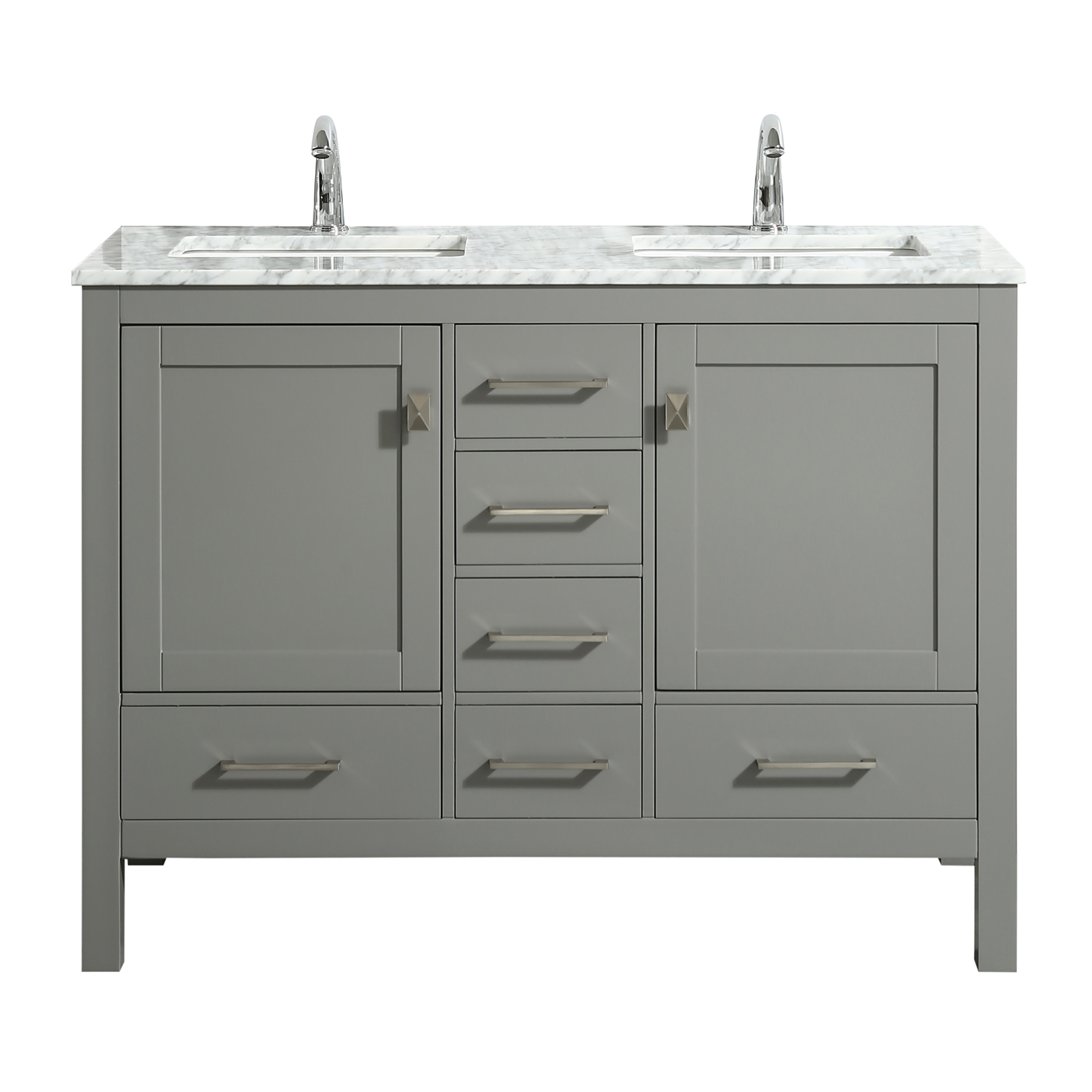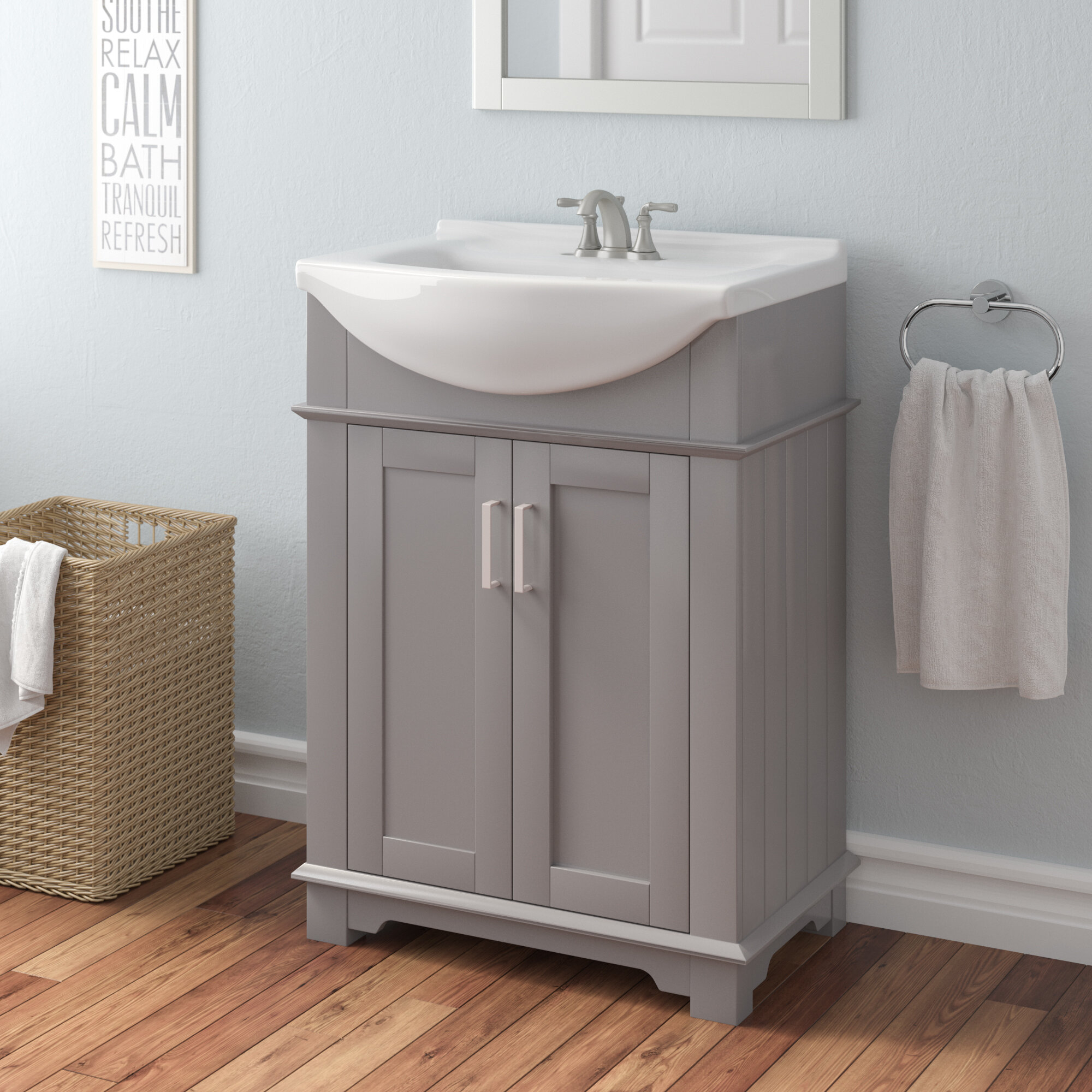Understanding Bathroom Vanity Depth

The depth of your bathroom vanity is a crucial factor in determining the overall functionality and aesthetics of your bathroom. It affects how much storage space you have, how comfortable it is to use, and how the vanity fits into the overall layout of the room.
The Impact of Vanity Depth on Bathroom Size and Layout
The depth of your vanity directly impacts how much space it takes up in your bathroom. In a small bathroom, a shallow vanity can help maximize floor space and create a sense of openness. On the other hand, a deep vanity can be a great way to add storage and create a more luxurious feel in a larger bathroom.
The Impact of Vanity Depth on Accessibility and Ease of Use
Vanity depth also plays a significant role in accessibility and ease of use. A deeper vanity can provide more counter space for toiletries and other items, making it easier to use for people of all heights and abilities. However, a deep vanity can also make it difficult to reach the back of the counter, especially for people with limited mobility.
Examples of Different Vanity Depths and Their Corresponding Bathroom Spaces
- Shallow Vanity (18-21 inches): Ideal for small bathrooms, powder rooms, or guest bathrooms where space is limited. A shallow vanity can provide enough counter space for basic necessities while maximizing floor space.
- Standard Vanity (22-24 inches): The most common depth for bathroom vanities. It offers a good balance between storage space and counter space, suitable for most bathroom sizes.
- Deep Vanity (25-30 inches): Suitable for larger bathrooms where space is not a concern. A deep vanity can provide ample storage and counter space for a luxurious bathroom experience. It is also ideal for families with multiple people who need ample space for their belongings.
Factors Influencing Vanity Depth Selection: What Is The Depth Of A Bathroom Vanity

Choosing the right vanity depth is crucial for creating a functional and aesthetically pleasing bathroom. It impacts everything from sink size and countertop materials to storage space and plumbing access.
Sink Size
The size of the sink you choose significantly affects the required vanity depth. Larger sinks require a deeper vanity to accommodate their dimensions and provide adequate counter space. A smaller sink, on the other hand, can be installed on a shallower vanity.
- Undermount Sinks: These sinks are installed beneath the countertop, creating a seamless and elegant look. Undermount sinks typically require a vanity depth of at least 22 inches to accommodate the sink and provide sufficient counter space.
- Vessel Sinks: Vessel sinks sit on top of the countertop, adding a stylish and modern touch. They require less vanity depth, with a minimum of 18 inches typically sufficient.
- Drop-in Sinks: Drop-in sinks are installed into a cut-out in the countertop. They offer a balance between undermount and vessel sinks, requiring a vanity depth between 18 and 22 inches, depending on the sink size.
Countertop Materials
The thickness of the countertop material also impacts the required vanity depth. Thicker countertops, such as granite or quartz, will necessitate a deeper vanity to accommodate the material and maintain a consistent counter height. Thinner countertops, like laminate or engineered stone, can be installed on shallower vanities.
- Granite and Quartz: These materials are known for their durability and beauty. They typically have a thickness of 1.5 to 2 inches, requiring a vanity depth of at least 22 inches.
- Laminate and Engineered Stone: These materials are more affordable and offer a variety of styles. They typically have a thickness of 0.75 to 1 inch, allowing for shallower vanities with a minimum depth of 18 inches.
Storage Needs
The amount of storage you require in your bathroom directly influences the vanity depth. Deeper vanities offer more storage space, allowing for ample room for toiletries, towels, and other bathroom essentials.
- Small Bathrooms: For smaller bathrooms, a vanity depth of 18 to 21 inches might suffice, providing enough storage for basic necessities.
- Larger Bathrooms: In larger bathrooms, a deeper vanity of 22 to 24 inches can accommodate more storage and provide ample counter space.
Plumbing Access
The location of plumbing pipes and fixtures can also influence the required vanity depth. If the plumbing is positioned close to the wall, a shallower vanity might be sufficient. However, if the plumbing is further out, a deeper vanity might be necessary to accommodate the pipes and ensure proper installation.
- Wall-Mounted Vanities: These vanities are installed directly on the wall, eliminating the need for a base cabinet. They offer a more open and spacious feel and can be installed with shallower depths.
- Floor-Mounted Vanities: These vanities are installed on the floor, providing a traditional and stable base. They typically require a deeper depth to accommodate the base cabinet and plumbing.
Advantages and Disadvantages of Different Vanity Depths
Shallow Vanities (18-21 inches)
- Advantages:
- Save space in smaller bathrooms.
- Offer a more open and airy feel.
- Can be more affordable than deeper vanities.
- Disadvantages:
- Limited storage space.
- May not accommodate larger sinks or thicker countertops.
- Can feel cramped in larger bathrooms.
Deep Vanities (22-24 inches)
- Advantages:
- Provide ample storage space.
- Accommodate larger sinks and thicker countertops.
- Offer a more spacious and comfortable feel.
- Disadvantages:
- Can take up more space in smaller bathrooms.
- May be more expensive than shallower vanities.
- Can feel bulky and imposing in smaller bathrooms.
Table of Factors Influencing Vanity Depth
| Factor | Description | Impact on Depth |
|---|---|---|
| Sink Size | Larger sinks require a deeper vanity to accommodate their dimensions. | Increases depth. |
| Countertop Materials | Thicker countertop materials necessitate a deeper vanity. | Increases depth. |
| Storage Needs | More storage space requires a deeper vanity. | Increases depth. |
| Plumbing Access | Plumbing positioned further out from the wall requires a deeper vanity. | Increases depth. |
Practical Considerations for Vanity Depth

The depth of your bathroom vanity is a crucial design element that significantly influences both the functionality and aesthetics of your bathroom. It’s not just about how much storage space you have, but also about how comfortably you can move around and use the space.
What is the depth of a bathroom vanity – Choosing the right vanity depth requires careful consideration of several factors, including the size of your bathroom, the layout of your fixtures, and your personal preferences.
Impact of Vanity Depth on Bathroom Layout, What is the depth of a bathroom vanity
The depth of your vanity can significantly impact the overall flow and traffic patterns within your bathroom. Here are some key considerations:
- Optimizing Space: A deep vanity might seem like a good idea for storage, but it can make your bathroom feel cramped, especially if you have a smaller space. Conversely, a shallow vanity might not provide enough storage but can make your bathroom feel more spacious and open.
- Traffic Flow: Consider the placement of your vanity and the flow of traffic in your bathroom. A deep vanity might impede movement if it’s placed in a narrow hallway or near a doorway.
- Accessibility: If you’re designing a bathroom for someone with mobility issues, a shallow vanity with an open design can make it easier to access and use the sink.
Visualizing Different Vanity Depth Options
To illustrate the impact of vanity depth on bathroom layout, consider these examples:
- Small Bathroom: A shallow vanity (18-21 inches deep) would be ideal for a small bathroom. This would allow for more open space and a less cramped feel.
- Large Bathroom: In a large bathroom, you have more flexibility to choose a deeper vanity (24-30 inches deep) without compromising space. This would provide ample storage and a more luxurious feel.
- Narrow Bathroom: For a narrow bathroom, a vanity with a smaller depth (18-21 inches) would be the best option. This would prevent the vanity from taking up too much space and obstructing movement.
